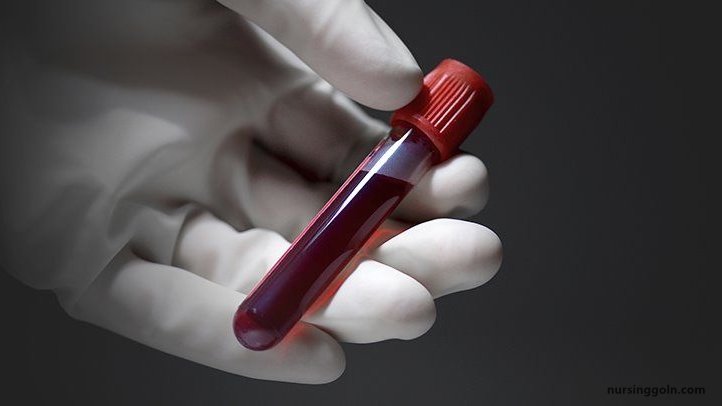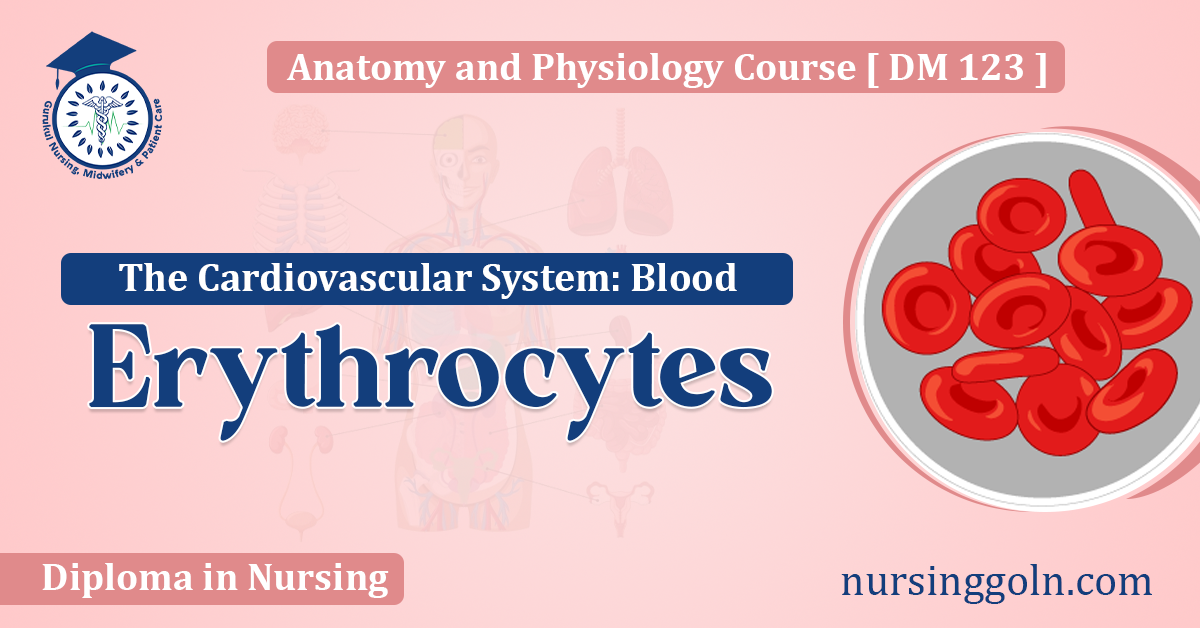Today our topic of discussion is ” Blood Erythrocytes “. Blood is an essential component of the human body, responsible for transporting oxygen, nutrients, and waste products to and from the body’s tissues. Within the vast arena of the cardiovascular system, erythrocytes or red blood cells (RBCs) play a crucial role. This article delves deep into the fascinating world of erythrocytes, elucidating their structure, function, life cycle, and significance in health and disease.

Blood Erythrocytes – The Cardiovascular System: Blood
1. Structure of Erythrocytes
Erythrocytes, unlike most cells in the human body, lack a nucleus, mitochondria, and other organelles. This biconcave disc shape offers a larger surface area for gas exchange and flexibility to traverse the narrowest capillaries.
Cell Membrane: The erythrocyte membrane, comprising lipids and proteins, offers both stability and flexibility. Integral proteins, like spectrin and ankyrin, provide structural support, while transport proteins facilitate the movement of ions and molecules.
Hemoglobin: The red pigment, hemoglobin, is the star player within erythrocytes. Each hemoglobin molecule binds with up to four oxygen molecules, allowing erythrocytes to ferry oxygen from the lungs to tissues and return with carbon dioxide.
2. Formation and Life Cycle of Erythrocytes
Erythropoiesis is the process of erythrocyte production, which occurs primarily in the bone marrow.
Stimulus for Production: Hypoxia, or low oxygen levels in tissues, stimulates the kidneys to release erythropoietin (EPO). EPO, in turn, stimulates bone marrow to augment erythrocyte production.
Stages of Maturation: Hematopoietic stem cells in the bone marrow differentiate into proerythroblasts. These cells undergo several maturation stages, losing their nucleus and organelles, and amassing hemoglobin, culminating in the formation of reticulocytes. These reticulocytes eventually mature into erythrocytes.
Lifecycle: Erythrocytes live for about 120 days. As they age, they become less flexible and are removed by macrophages in the spleen and liver.

3. Functions of Erythrocytes
Oxygen Transport: Binding with oxygen in the lungs and releasing it in tissues, erythrocytes ensure that every cell receives the oxygen it needs for cellular respiration.
Carbon Dioxide Removal: Erythrocytes collect carbon dioxide, a waste product, from tissues and transport it to the lungs for exhalation.
Acid-Base Balance: By carrying carbon dioxide (in the form of bicarbonate) and partnering with blood buffers, erythrocytes play a role in maintaining the body’s pH balance.

4. Disorders Associated with Erythrocytes
Anemia: This condition arises from a deficiency in erythrocytes or hemoglobin. Anemic individuals often present with fatigue, pallor, and shortness of breath.
Polycythemia: Characterized by an overproduction of erythrocytes, polycythemia can thicken the blood, leading to clots and cardiovascular issues.
Sickle Cell Disease: A genetic mutation causes hemoglobin molecules to deform erythrocytes into a sickle shape, leading to blockages in small blood vessels and reduced oxygen delivery.
Thalassemia: Another genetic disorder, thalassemia results from defective hemoglobin production, leading to hemolysis and anemia.

5. Erythrocytes in Research and Medicine
Blood Transfusions: Erythrocytes are a primary component in blood transfusions, which are vital in surgery, trauma care, and treating certain diseases.
Diagnostic Marker: The number, size, and hemoglobin content of erythrocytes can indicate various conditions, from nutritional deficiencies to bone marrow disorders.
Conclusion
Erythrocytes, while tiny and seemingly simple, play a pivotal role in maintaining the vitality of the human body. Their diligent work ensures that each cell receives the oxygen it requires and is relieved of waste products. Understanding the structure, function, and disorders associated with erythrocytes is not only pivotal for medical professionals but is also a testament to the intricate design of human physiology. As research progresses, the humble erythrocyte continues to offer insights into the wonders of the human body and the complexities of the cardiovascular system.
Read more:
